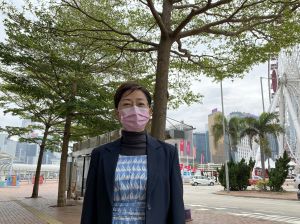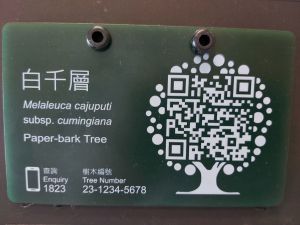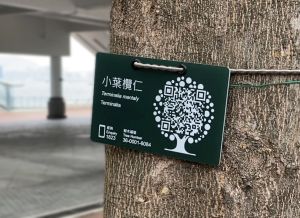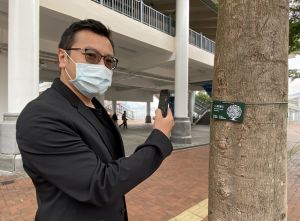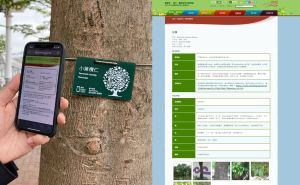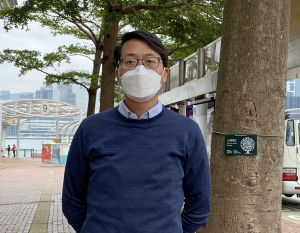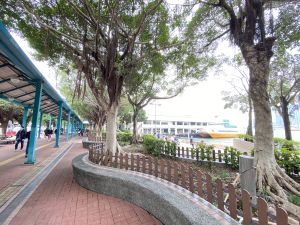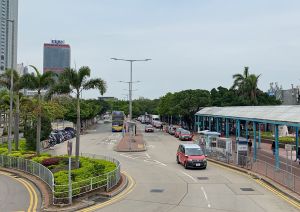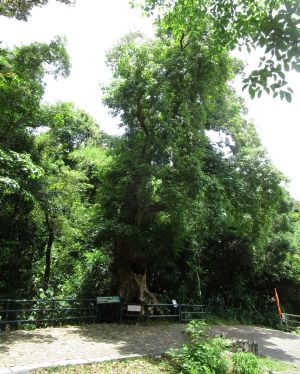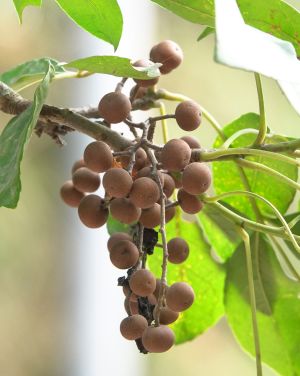Tree labels with QR codes
|
There is a large number of trees in the territory. Different tree species can be seen along roadsides and in parks. For trees to grow healthily, apart from the comprehensive risk assessment and regular maintenance of trees carried out by the tree management departments, the co-operation of the public is also very important. We are now launching a scheme for tree labels with QR codes, hoping to raise public awareness of trees and their maintenance so that we can all work together to reduce the risk of tree failure. This time, I have invited a colleague from the Development Bureau (DEVB), a landscape architect and a botanist, who are in charge of implementing the scheme, to introduce the details to us. Currently about 1.7 million trees in Hong Kong are under the regular maintenance of the Government and amongst them, about one million are in areas of high pedestrian and vehicular traffic flow. In view of the wide distribution of trees in the territory, the Government adopts an “integrated approach” for tree management, under which departments are responsible for managing the trees in the facilities and land within their purview, so that appropriate routine tree maintenance can be carried out having regard to the characteristics and locations of different trees. On the other hand, trees located on private land are under the care of respective private lot and property owners. Facilitating the public to report problematic trees The DEVB has been actively exploring ways to apply smart technologies in tree management to enhance its efficiency and effectiveness. Displaying tree labels with QR codes is one of the new initiatives. Tree Management Officer, Ms CHAN Yuen-man, Paula, of the DEVB says that through the use of QR codes, the scheme aims at bringing convenience to the public in reporting problematic trees and providing them with more tree knowledge, such as tree species, whether the species are native or exotic, tree characteristics and other fun facts. Our work to display QR-coded labels has been commenced, and this exercise will be completed in phases. We expect to first display QR-coded labels on about 200 000 trees along roadsides in early 2022. Tree labels placed at pedestrians’ eye levels Landscape Architect, Mr CHAN Yuen-king, Paul, a representative of the consulting company implementing the scheme, tells us that tree labels with QR codes will be hung on trees at eye level of pedestrians. Tree labels bear basic tree information including Chinese and English names and botanical names. They mainly have two functions. Firstly, in case a problematic tree is found, the public can report to the authorities by, for example, calling 1823. As each tree has a unique number printed on its label, the public can tell the accurate location of a tree. Secondly, the public may scan the QR code on the tree label with a mobile phone to enter the website of the tree management authority for more tree information. Covering locations with higher pedestrian flow Mr Paul CHAN says that the scheme for tree labels with QR codes covers the whole territory, involving trees at locations with higher pedestrian flow, such as major transport nodes which include areas outside MTR stations and ferry terminals. About 10 000 tree labels for around 100 tree species will be produced for distribution to various districts across Hong Kong in the first phase of the scheme. He says that as Hong Kong is a dense and compact city where people and trees are interrelated, he hopes that trees will receive more public attention through the scheme. Tree information being scientific and interesting Curator of Shiu-Ying Hu Herbarium of the Chinese University of Hong Kong, Dr LAU Tai-wai, David, who is responsible for collection and compilation of the tree information, says that he is excited that the herbarium can take part in the scheme. With the dedication of his colleagues to collecting information, the tree information thus compiled is both scientific and interesting. Quoting an example, he says that there is a tree species called Autumn Maple in Hong Kong. It is a native species of ecological significance under the family of Euphorbiaceae. One Autumn Maple grown in Lai Chi Wo of Sha Tau Kok has a history of more than 100 years and is registered as an Old and Valuable Tree. The most interesting information is that the fruits of Autumn Maple can be used for making wine while leaves can be used as a spice for cooking into a dish called “Jia Dong Ji (Autumn Maple Chicken)”. Harmonious co-existence of the community and trees Dr David LAU says that the public can simply scan the QR codes on the tree labels for more detailed information to understand tree species from various perspectives. He hopes that the scheme will inspire the public to respect and cherish trees more with a view to achieving harmonious co-existence of the community and trees, which is also the aim of his team in compiling the tree information. Trees are integral parts of our outdoor environment. They provide amenity areas, moderate temperature, improve air quality and enhance biodiversity. This time, it is hoped that, through the scheme for tree labels with QR codes, we will integrate the message of tree care into the daily life of the public and foster among them a positive attitude towards tree care, so that our trees can grow more vigorously and healthily to maintain Hong Kong as a safe, livable and sustainable city. Besides, land supply has always been an issue of concern in our community. The Government has been developing land through a multi-pronged approach to meet the needs for housing, economic and social development. Through this platform of “My Blog”, I would like to promote a television programme “Searching For Land”, which is produced with the effort of my colleagues, experts, stakeholders and me to engage the public to understand the land issue in Hong Kong. The programme has a total of 20 episodes, five of which were broadcast in the past week. You are welcome to click on the DEVB’s webpage on Thematic Clips to re-visit each episode. |
28 March, 2021
Back